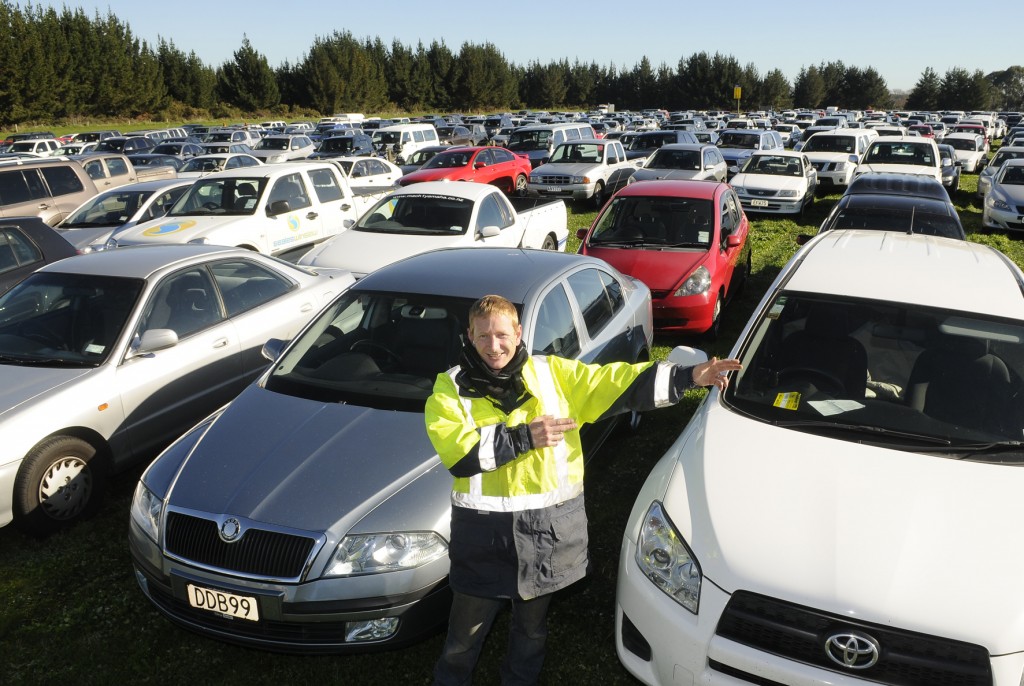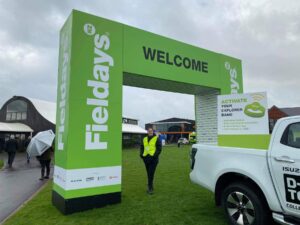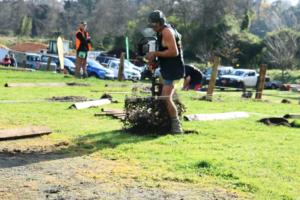A park for everyone
In a Hamilton living room scattered with toys, four brightly coloured toy cars are lined up perfectly. This is a reminder of a father’s annual parking duty at the Fieldays.
In a Hamilton living room scattered with toys, four brightly coloured toy cars are lined up perfectly. This is a reminder of a father’s annual parking duty at the Fieldays.
The father is Lance Enevoldsen who, as well as being a family man and Imageland’s company director, is chairman of the Fieldays parking committee. It’s a voluntary role that he has been doing for the past four years but he has been involved with the parking crew for around 16 years. From a farming background himself, Enevoldsen first got involved with the Fieldays when he was part of the Young Farmers group that used to handle all the parking.
When asked what he does at the event he humorously responds: “That’s always a tricky question because I don’t really know anything about what I’m doing”. He goes on to say, however, the job involves coordinating 47 people, separated into parking teams for each of the car park areas that the public and Fieldays exhibitors enter. There are three zones, two of them with two areas, while the other has about five areas.
“I’ve also got people that are also in the parking committee, that manage each car park, so to speak. But their role is to just help out the teams that are parking and make sure the public are looked after where possible if they have any issues,” he says.
Thousands of vehicles move in and out each day, and Enevoldsen estimates that each car park area can hold around a couple of thousand vehicles.

“We’ve always got enough space. We’ve got so much contingency parking there, we could do huge amounts more [cars].”
Enevoldsen says over the years the parking system has developed to become a lot faster and more efficient.
“We fit more cars now into the same areas than we used to and we’ve got a better access road.”
He is usually on site by 5.30am on fine days, or around 4.30am if there has been bad weather and he needs to assess possible damage.
“If we get wet, chopped-up car parks from day one it does get quite challenging by Saturday. We haven’t had that for few years. In fact I only remember doing that once in the past 16 years”.
He holds a quick briefing with his team, making sure every car park is set to go for the day. He also has a briefing with traffic management and police around 7am.
“From there on it’s [he and the team] monitoring everything as it goes and just dealing with issues as they come up.”
Enevoldsen says issues that arise are not usually that major. “People broken down, blocking lanes, so traffic backs up because of that. [The team] having to scoot around and sort that out,” he says.
However, someone once moved a road cone that was stopping people from parking in a particular area. They reversed their car into what they thought was a car park, straight into a drain.
“[It was] his brand new car that he had literally just picked up from the car yard in Auckland and driven down. That was classic,” he says.
Enevoldsen says the team does have access to different towing vehicles.
“If we need a tractor to tow out a camper van we can get a tractor there. But my team is usually [on] quad bikes or that sort of thing that they can tow people out with.”
He says most people drive to the Fieldays, and believes there isn’t much interest in public transport. “People going the Fieldays seem to like their independence, being able to get in their car and go when they like.”
One of those who will be driving to the event this year is Cambridge farmer Stuart Smith. The 49-year-old says it’s a mad rush driving to there early in the morning, which is why he tends to go at around midday.
“[In the morning] you’ll be lined up for miles, it is quite busy. And then it’s extra busy at the end of the day when everybody’s heading home,” he says.
But he finds the parking good.
“There is plenty of space, you get can fairly close at that time of the day [midday] and don’t have to walk too far,” he says.
Several times he has seen cars stuck in mud and says it would “just be townies who don’t know how to drive”.
He says the parking paddocks can sometimes be quite foggy and has noticed that people are often left with flat car batteries from leaving their headlights on.
“The AA [auto service] seems to run around with jump starters. That keeps them fairly busy,” he says.
Enevoldsen says preparation for the event is ongoing throughout the year, but three months before the event there is plenty to do.
“We’ve been doing it so long and every person that’s done it always had a system and you just tweak and change it. There is 40 odd years of system there.”
Over his time working with parking at the Fieldays, Enevoldsen has not once entered the event itself.
“When I’ve been in the parking role I have never once been into the Fieldays during the opening hours to have a look around. I make sure my team gets a chance.”
He pays tribute to his team. “They’re fantastic with what they put up with. The parking crew ranges from ages 18 through to in their 60s, possibly even 70s because one of the teams that does parking is the Rotary Club. They’re awesome people to work with.”
Enevoldsen says there are several reasons why he returns as a volunteer to Fieldays year-after-year.
“It’s working with good people. It’s finding it’s a different challenge. There’s probably a level of adrenaline that you get out of it, there’s a certain kick in helping people. But the fact that it’s quite different to anything else, that’s probably the main one.”




